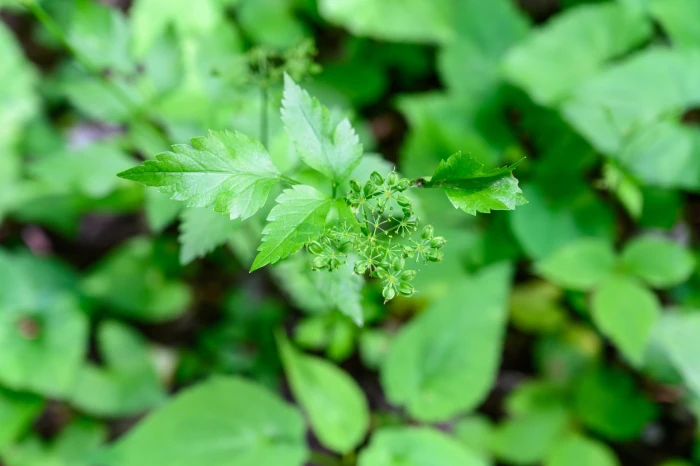Bearded Meadow-Parsnip
(Thaspium barbinode)
Bearded Meadow-Parsnip (Thaspium barbinode)
/
/

© Lee Ann Ratledge
CC BY 4.0
Image By:
© Lee Ann Ratledge
Recorded By:
Copyright:
CC BY 4.0
Copyright Notice:
Photo by: © Lee Ann Ratledge | License Type: CC BY 4.0 | License URL: http://creativecommons.org/licenses/by/4.0/ | Uploader: laratledge | Publisher: iNaturalist |






















Estimated Native Range
Climate Requirements for Logan, Utah
| This Plant | Your Site | Plant Suitability for Your Location | ||
|---|---|---|---|---|
| • Precipitation | 28" - 82" | 19" | Your precipitation may be insufficient for this plant. Irrigate N" / year. | Irrigate N" / year |
| • High Temp. | 71°F - 94°F | 89°F | Your summer temperatures are normal for this plant. | Excellent |
| • Low Temp. | 4°F - 39°F | 14°F | Your winter temperatures are normal for this plant | Excellent |
This plant should grow well at your location with about N inches per year (Y minutes per month) of irrigation.
Summary
Thaspium barbinode, commonly known as bearded meadow-parsnip or hairy-jointed meadow-parsnip, is a perennial herb native to rich, mesic woodlands, floodplain forests, and shaded stream banks in the central and eastern United States, with a range extending from eastern Texas to southeastern Wisconsin and from the Florida panhandle to southern New York. It typically grows to a height of 2 to 4 feet (0.6 to 1.2 meters) and is characterized by its compound leaves and clusters of small, bright yellow flowers that bloom in late spring to early summer. The flowers are arranged in umbels, making them quite showy and attractive to pollinators such as bees and butterflies.
Bearded meadow-parsnip is valued for its ability to thrive in shaded garden areas where other flowering plants may struggle. It is often used in native plant gardens, woodland gardens, and as part of naturalized areas to provide seasonal interest. This species prefers consistently moist, well-drained soils and can tolerate light shade to partial sun. It is not commonly afflicted by serious pests or diseases, but gardeners should be aware that it may self-seed and spread if conditions are favorable. While not aggressive, it can naturalize in suitable habitats.CC BY-SA 4.0
Bearded meadow-parsnip is valued for its ability to thrive in shaded garden areas where other flowering plants may struggle. It is often used in native plant gardens, woodland gardens, and as part of naturalized areas to provide seasonal interest. This species prefers consistently moist, well-drained soils and can tolerate light shade to partial sun. It is not commonly afflicted by serious pests or diseases, but gardeners should be aware that it may self-seed and spread if conditions are favorable. While not aggressive, it can naturalize in suitable habitats.CC BY-SA 4.0
Plant Description
- Plant Type: Herb
- Height: 1.5-3 feet
- Width: 1-2 feet
- Growth Rate: Rapid
- Flower Color: Yellow
- Flowering Season: Spring
- Leaf Retention: Deciduous
Growth Requirements
- Sun: Full Sun
- Water: Medium
- Drainage: Medium
Common Uses
Bee Garden, Butterfly Garden, Low Maintenance
Natural Habitat
native to rich, mesic woodlands, floodplain forests, and shaded stream banks in the ce ntral and eastern United States, with a range extending from eastern Texas to southeastern Wisconsin and from the Florida panhandle to southern New York
Other Names
Common Names: Bearded Meadow-Parsnip, Hairyspine Thaspium
Scientific Names: Thaspium barbinode, Ligusticum barbinode, Smyrnium barbinode, Thapsia trifoliata, Thaspium barbinode var. angustifolium, Thaspium barbinode var. barbinode, Thaspium barbinode var. chapmanii, Thaspium barbinode var. garmanii, Thaspium barbinode var. pinnatifidum
GBIF Accepted Name: Thaspium barbinode